Last Tuesday, the phone would not stop ringing. Most of my work is corresponded via email so this usually means one thing, that Chris is out fishing and giving me hourly updates. Sure enough, he was out on his first barfishing trip of the year. At 5:30pm, just as I was getting ready for supper, it rang again. “Got it!”, he said. A 28lb chinook salmon started what appears to be a very productive season.
Each summer, hundreds of thousands of chinook salmon make their way into the Fraser River. It is their main passage to their natal streams, which are tributaries of the Fraser that are found across this province. The timing of each stream’s run corresponds to the distance that they have to travel. The more inland the natal stream is, the earlier they enter the Fraser River. In July and August, chinook salmon from the Shuswap watershed begin to enter the Lower Fraser. This run is typically strong in numbers and this year is no exception. Their return date often coincides with the clearing of the Fraser River, which means barfishing for them can be rather good.
Thanks to the Fraser Valley Salmon Society, recreational anglers have been able to enjoy fishing for Fraser River chinook salmon. Barfishing has been the primary fishing method, which involves anchoring a spin n glow in their travelling channel in hope of a bite. It is a waiting and social game, which makes it the ideal fishery for families.
With one fish tagged on his licence this early in the season, Chris decided to do a two-day trip by spending the night “at the bar” on Thursday night.
“You should come out on Friday, I can drive the boat down and pick you up at 6:00am.”, he said.
With fair amount of work still needed to be done and the early starting hour, I hesitated to say yes to the invite. It’d mean that I had to rise at 4:00am, which is always a challenge for me. While deciding, Nick confirmed that he would be there on Friday too and that had me setting work aside for the day. With two experienced Fraser Valley anglers on site, I can always expect the fishing to be worth mentioning afterward. We also wanted to have a video series on barfishing made available for anglers, so the day was not all pleasure, but some hard work too.
After picking me up in his Leaf Craft at 6:30am, we proceeded to the bar. Excitement came rather quickly, when Chris spotted a black bear with his sharp eyes. The skinny bear, taking advantage of the cool morning, fed on black berries along the river shoreline. The possibility of a bear sighting is always quite big when fishing in BC’s wilderness.
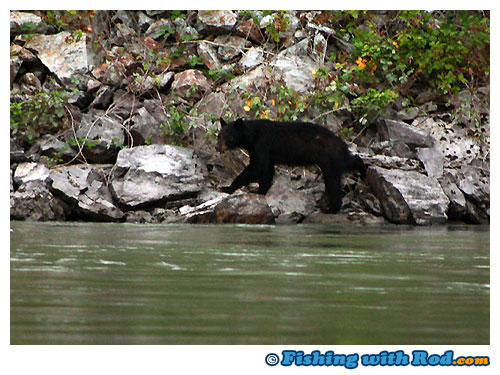
Looking for breakfast.
We approached our bar shortly after. As our boat motored in closer, Chris said, “It looks like Don has a fish on!”
Sure enough, Nick was standing by with his net while Don carefully guided the fish into the shallow water. With one precise scoop, the first chinook salmon of the day was on the beach. It was a rather good sign to see a catch this early in the day. Don’s fish topped the scale at just over 20lb, a typical size for these interior summer chinooks. Nick said that they had seen fish surfacing further downstream just before the rod danced in the holder. That was not really a surprise, considering test fishery result at Albion has indicated more returning fish in recent days.
We unloaded the boat and settled in. While getting his rods ready, Chris had discovered a rather long leader on his fishing rod that had been resting in the holder while he went to pick me up. Nick and his gang had a good chuckle when Chris finally clued in on what was happening. Five bar rods sat in their holders once everything was organized, we sat back and awaited for the next bite.
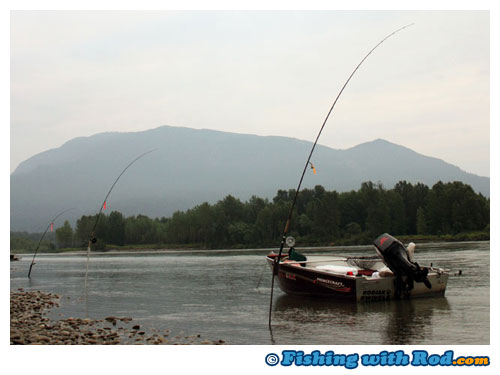
A waiting game.
The second bite came soon after, it was on the same rod that Don had just landed a fish on. Nick scrambled and ran for the rod as it danced in the holder. Fish on! It came in quickly as Nick put the pressure on. A small chinook salmon, which looked to be around 10lb, was in Dean’s hands in no time. Nick decided to let this fish go, because of its size and some scars that it was carrying.
It was time to cast it out after this brief interruption and back on the chairs we went.
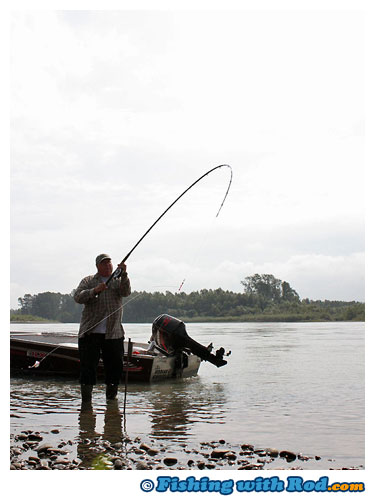
Casting 18oz of weight requires plenty of strength and a stiff rod.
Another hour went by while we chatted and snacked. Suddenly, the bell ring could clearly be heard, it was the same rod again! It was Dean’s turn to play a fish. Soon after he grabbed the rod, the fish performed a couple of leaps. With full control, Dean prevented the fish from going downstream. The fight lasted for five minutes before Dean was able to mark his licence with a ocean-bright 14lb chinook salmon.
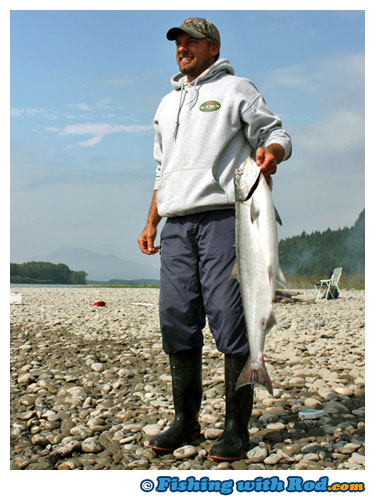
Straight from the ocean.
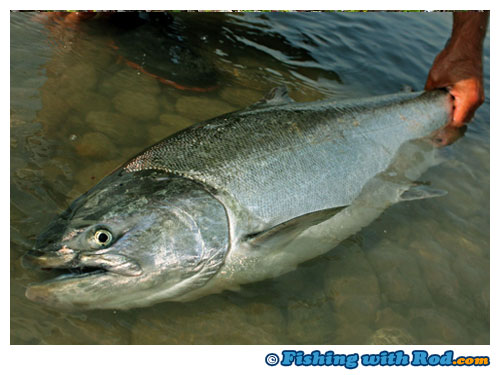
Summer chinook salmon.
Meanwhile, Chris and I looked at each other because we could not figure out why our rods had not been dancing. Shortly after the third catch, Nick’s rod produced another welcoming sight. The fish had taken off like a freight train as soon as Nick took the fishing rod out of the holder. With two more rods and a few boats anchored downstream from him. He had no choice but to hop into the boat and give chase. Dean followed in as his netter, while I sat at the front to document the entire event on my video camera. The chase resembled what you would see in the open ocean. This stubborn fish seemed to be making its way back into the Pacific Ocean. We drifted by two boats as Nick began picking up the slack line. When we finally caught up to the fish, it dove deeply and kept Nick on the edge. Nick continued onto on the pressure. The rod tip dipped the water a few times. This looked more like halibut fishing than river salmon fishing. After a few minutes of tugging, The leader emerged from the murky water, soon followed by the fish’s head. Dean shoved the net opening straight down while Nick guided its head into it. It was a happy ending for the anglers after an intense battle.
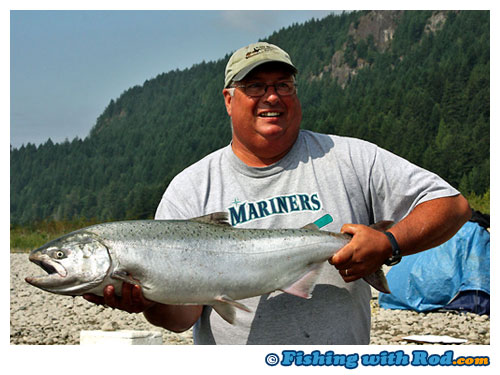
A well deserved catch after a long chase.
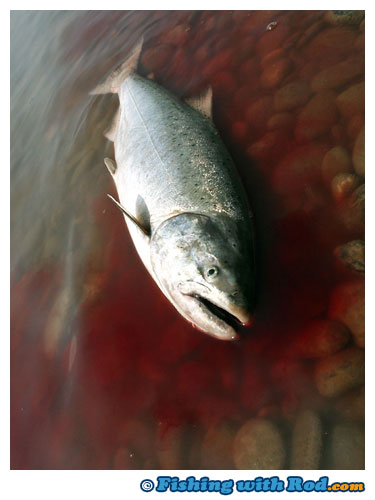
Bleed the fish thoroughly after killing it.
Nick’s fish weighed in at 17lb, but it fought like a tyee. Now that the successful trio had their catches, it was time for Chris and I to get one. We decided that it was time for Nick and Chris to do some demonstration on barfishing setups and a talk that would help other anglers to also enjoy this technique. I made both to sit in front of the rods. Nick remarked that the rods always go off whenever we do this type of camera work.
Sure enough, a rod in the background began kicking while Nick was explaining the terminal gear. I sprinted toward the rod as the camera kept rolling. Don had set the hook before passing the rod to me. Chris picked up the tripod and followed the action. It was a classic intense moment. The fish exposed its dorsal fin soon after I was given the rod. A small ten pounder I thought, judging by the size of the dorsal fin. Was I ever wrong! Just when I thought that I was going to retrieve it with ease, the reel screamed repeatedly. I held the rod high and palmed onto the mooching reel so there would be tension. For a few minutes, it took more line out but remained directly in front of us. The fish finally seemed more tired after holding in the main channel. I proceeded to pump and reel. It re-emerged in the shallow soon after. Don awaited for his chance to scoop it up. When the fish made another appearance in front of him, he swiftly went for the scoop but the net only touched the tail briefly. With one foreign touch, the fish was startled and began taking even more line out and travelling downstream this time. Excitement had now turned to chaos. Nick verbally guided me through the fight, suggesting that I needed to move further downstream to give chase. I began walking, under one rod, around one boat, before catching up to it again. The fish was tired once again after that robust attempt to escape. I guided it into the shallow and Don was ready with the net. He went for another scoop, but this time only the tail half of the fish made it into the opening! It was a bigger than I had expected after all. Seeing another failed landing, Nick said that I should be downstream from the fish so I could guide it into Don with the aid of the river current. We took his advice and the third attempt was a success! Don netted it precisely and I could feel all pressure lifted off my shoulders. It turned out to be just under 20lb, slightly bigger than what I had initially thought.
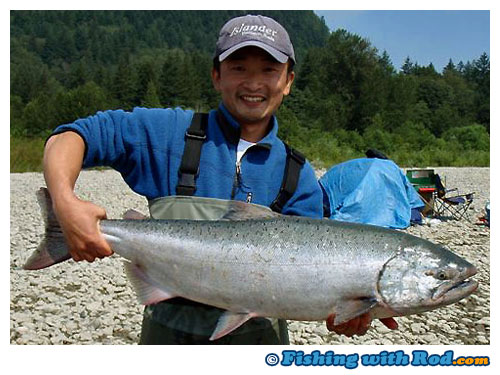
It looked just a bit bigger than 10lb.
We returned to filming after the brief interruption. The school seemed to have gone by, because the rods stopped dancing. Nick, Don and Dean left the rods in the water for 45 more minutes to give Chris a bigger chance of catching one before calling it a day. Not long after their departure, Chris’ rod began kicking in the holder. “Chris! Chris! Fish!”, I yelled, but there was no response! He had fallen asleep in his chair. I ran toward the rod, hoping to set the hook for him. The attempt was useless, because it appeared that the fish was long gone before I had reached the rod.
The rest of the afternoon involved plenty of sun baking while we waited. It seemed that fish only liked what Nick was offering, because four of the landed fish were from the same rod. Perhaps it was simply casted out to the travelling lane for these fish. It is always a mystery why some rods are luckier than others.
We ended our outing at 3:30pm so I could bring the fine catch back home earlier to avoid spoiling it. The day had been hot, but with the fish kept in a ice-packed cooler, it ensured that it would stay fresh. The price value of these chinook salmon is several hundred dollars, so it would be a shame if the catch is not taken care of properly.
Tanned, mosquito-bitten, sore are all I could feel this morning, but it was all worth it after experiencing one hot day on the bar. Barfishing is a waiting game that can be unrewarding often, but this would only make a day such as yesterday even more unforgettable. Fantastic companions, unpredictable excitement and awesome catches, this is what fishing is all about.
The Fraser River chinook salmon fishing season lasts until early fall. I am hoping to have these barfishing instructional videos as well as some fishing footages available for you in the near future.
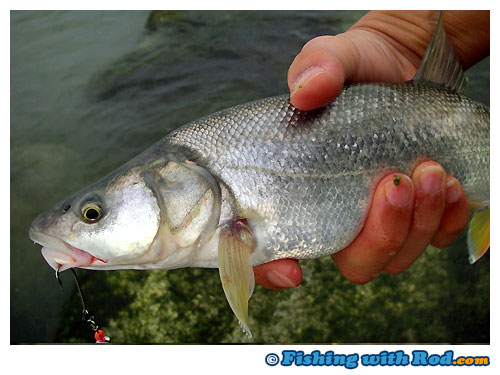
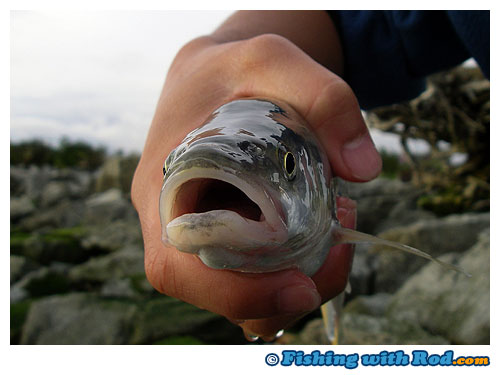

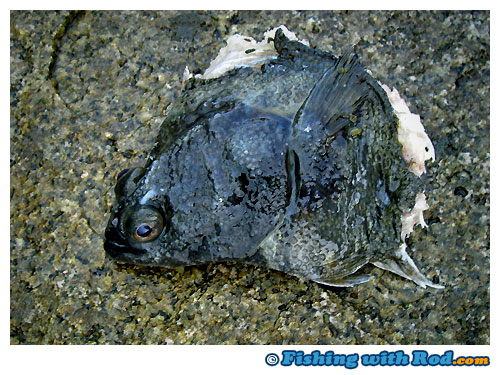
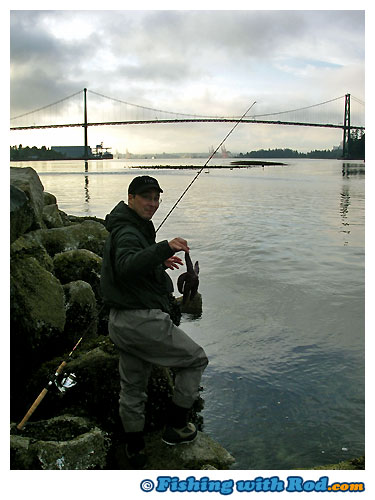
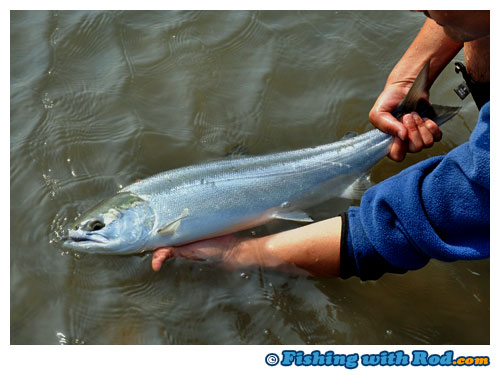 Â
 






